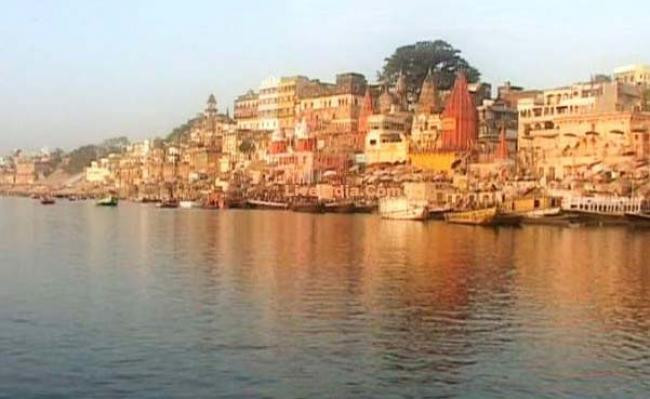Environment/Science
Environment/Science Cabinet approves Namami Gange project
13 May 2015, 03:25 pm Print

New Delhi, May 13 (JEN) The Union Cabinet on Wednesday approved the flagship “Namami Gange” Programme which integrates the efforts to clean and protect the Ganga river in a comprehensive manner.
The program has a budget outlay of Rs. 20,000 crore for the next 5 years.
This is a significant four-fold increase over the total expenditure in the past 30 years.
The government is focusing on involving people living on the banks of the river to attain sustainable results.
The programme also focuses on involving the States and grassroots level institutions such as Urban Local Bodies and Panchayati Raj Institutions in implementation.
The programme would be implemented by the National Mission for Clean Ganga (NMCG), and its state counterpart organizations i.e., State Program Management Groups (SPMGs).
It has been decided that In order to ramp up progress, the Centre will now take over 100 per cent funding of various activities/ projects under this programme. The Centre now plans to provide for operation & maintenance of the assets for a minimum 10 year period, and adopt a PPP/SPV approach for pollution hotspots.
In an attempt to bolster enforcement the Centre also plans to establish a 4-battalion Ganga Eco-Task Force, a Territorial Army unit, apart from contemplating on a legislation that aims to check pollution and protect the river.
The programme emphasizes on improved coordination mechanisms between various Ministries/Agencies of Central and State governments. Major infrastructure investments which fall under the original mandate of other ministries viz. Urban Development (UD), Drinking Water & Sanitation (DWS), Environment Forests & Climate Change (EF&CC) will be undertaken in addition.
‘Namami Gange’ will focus on pollution abatement interventions namely Interception, diversion & treatment of waste water flowing through the open drains through bio-remediation / appropriate in-situ treatment / use of innovative technologies / sewage treatment plants (STPs) / effluent treatment plant (ETPs); rehabilitation and augmentation of existing STPs and immediate short term measures for arresting pollution at exit points on river front to prevent inflow of sewage.
The programme is expected to deliver in terms of job creation, improved livelihoods and health benefits to the vast population that is dependent on the river.
The programme emphasizes on improved coordination mechanisms between various Ministries/Agencies of Central and State governments. Major infrastructure investments which fall under the original mandate of other ministries viz. Urban Development (UD), Drinking Water & Sanitation (DWS), Environment Forests & Climate Change (EF&CC) will be undertaken in addition.
‘Namami Gange’ will focus on pollution abatement interventions namely Interception, diversion & treatment of waste water flowing through the open drains through bio-remediation / appropriate in-situ treatment / use of innovative technologies / sewage treatment plants (STPs) / effluent treatment plant (ETPs); rehabilitation and augmentation of existing STPs and immediate short term measures for arresting pollution at exit points on river front to prevent inflow of sewage.
The programme is expected to deliver in terms of job creation, improved livelihoods and health benefits to the vast population that is dependent on the river.
More Environment/Science
- Study shows spending time in nature is good for us
- ‘Untold harm to nature’ from wildlife trafficking, says UN crime agency
- Flash floods strike Afghanistan, UN teams dispatch aid
- Study says air pollution and depression linked with heart disease deaths in middle-aged adults, study suggests
- Starlink satellites under a lot of pressure due to powerful solar storm which hit Earth, says Elon Musk






